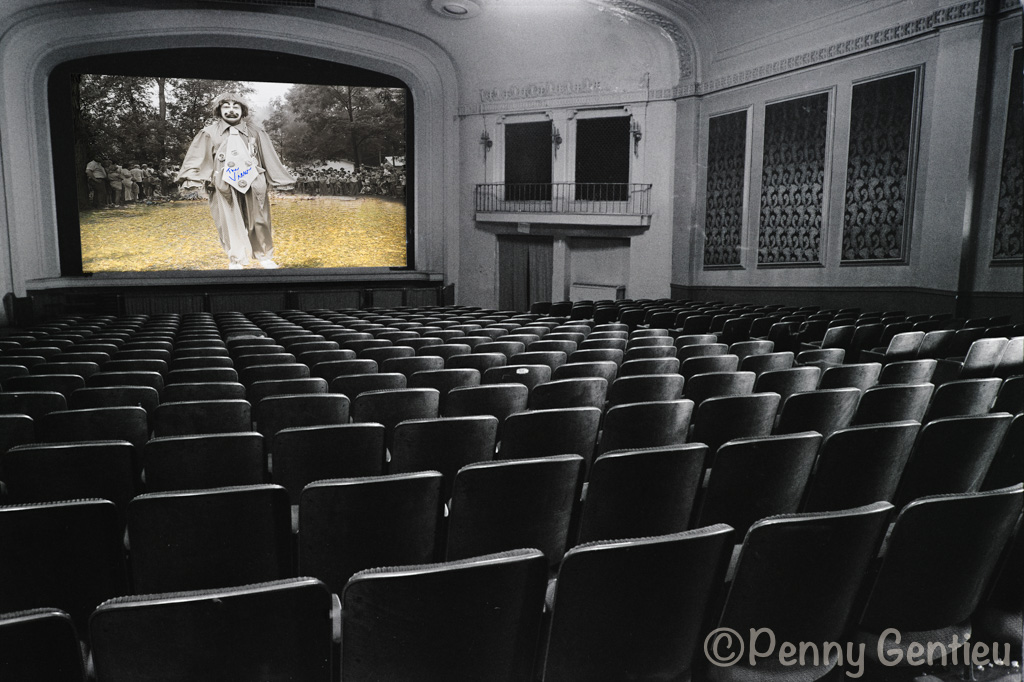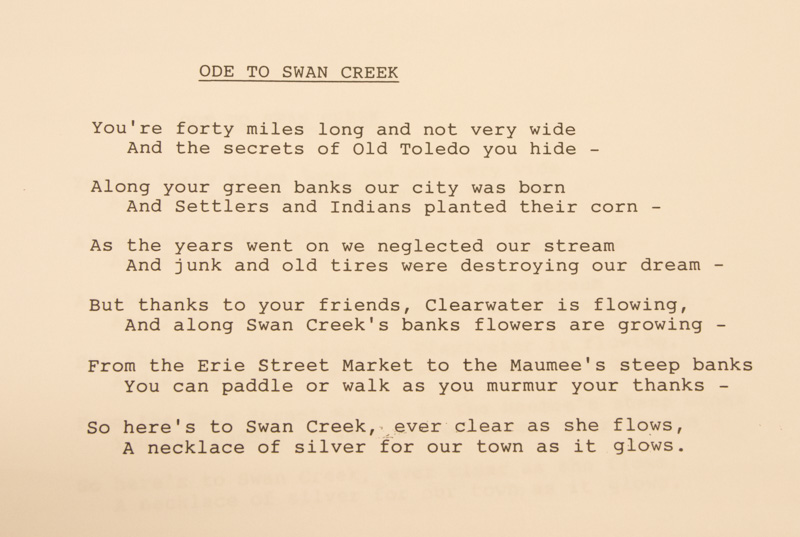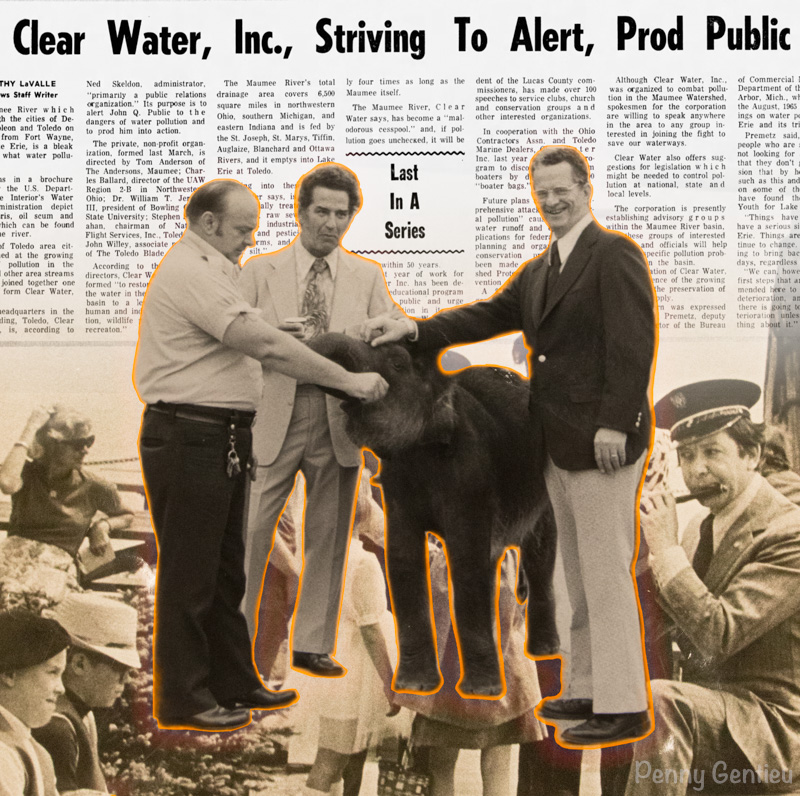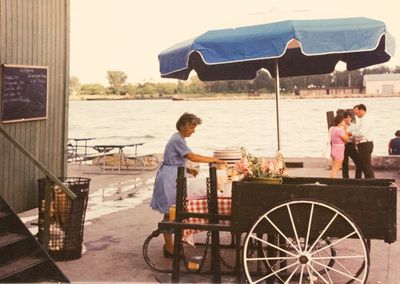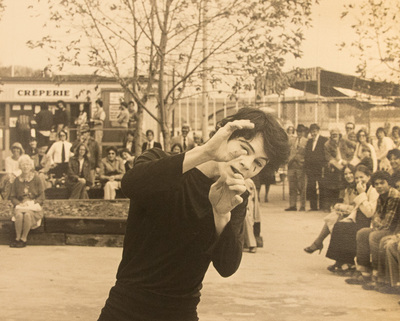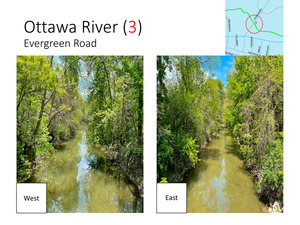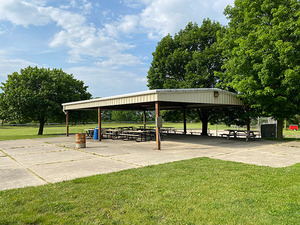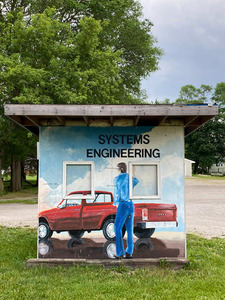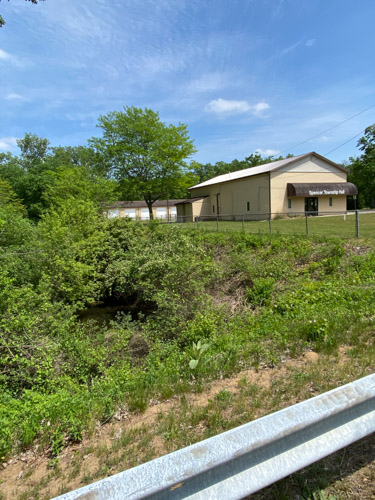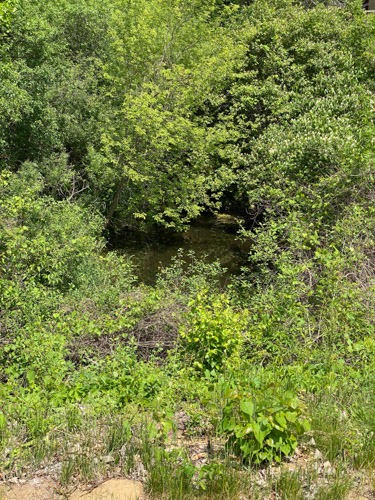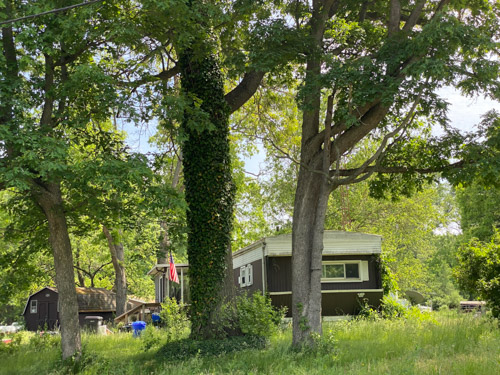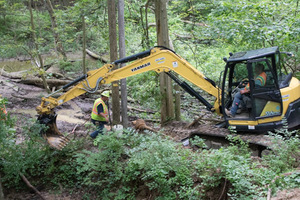I protested. I filed a remonstrance. Check out my many posts about the ditch petition going back to May 2021 reflecting my efforts. Taxpayers affected by this need a fair hearing, and not by commissioners who live in the counties, because they are biased. They should have to recuse themselves, as does the county that brings it, as explained in this blog post following my Letter to the Editor of August 2, 2021.

Sunshine and the watershed
Section 6130.04 of the Ohio Revised Code on ditch petitions states that if a petition for ditch improvement is brought by the county, that instead of the board of county commissioners deciding it, that hearings and decisions would be made through the Court of Common Pleas.
And here’s why: for fairness to everyone involved.

Lucas County cannot deny that the county engineer, Mike Pniewski wrote the Ten-mile Creek Watershed and Swan Creek Watershed ditch petitions, then shopped them around in person to find a puppet sponsor for each one of them. (Mike Pniewski pitched it to Sylvania Township, who turned him down, and he went to Spencer Township.) Then the county commissioners themselves approved the petitions, being their own judge and jury. Not exactly fair to the hundreds of thousands of residents who will be forever affected by their action (increased tax assessments and blanket rights to go onto their private property.)
At the last minute, right before the hearings, addendums were added to each of the petitions, more than doubling the number of ditches of each petition, and adding road ditches, which are already paid for with county money! Ten-mile Creek Watershed petition originally had 21 waterways listed, but on Oct 27, 2021, added 22 more waterways. The Swan Creek petition originally had 34 waterways, but then added 46 to the list. 90 ditches! The petitions also removed the initial limits on certain ditches and rivers covered by the original petition, to cover the entire lengths, not just certain sections, as was in the original petition.

With 25 feet of land taken from the banks of the waterways and access to that waterway, that’s quite the land grab of private property taken by the county government.
Notably, the plans and budget for cleaning the ditches remains the same – doubling the number of ditches and taking ten years to perform. Whereas without the petition, landowners would continue to maintain their own parts of the river, as it is now and how it has worked, forever, without any problems at all.

The Metroparks
I wonder how our beautiful Metroparks will be looking in a few years, waiting in line for their turn for county ditch maintenance, if ever. But I suppose the park system will appreciate not having to do their own maintenance on their rivers anymore with tax dollars they already get. Since the eminent attorney Fritz Byers, who is on the board of the Metroparks, is litigating for Lucas County on the Lake Erie-EPA lawsuit, and also serves as legal counsel for the Toledo Blade, I’m sure the Metroparks knows what’s going on and they seem to have no objection to it. Hopefully the Metroparks have a contingency plan for keeping the Metropark rivers and streams maintained in the interim, until it’s their turn to get cleaned by the county, like maybe in 2066. Or maybe the Metroparks will get the first cleaning, in that they have so much clout, making the other 132 waterways listed in the petitions have to wait until 2066, at least some of them.

The Hearings
In spite of the numerous private property owners braving the Covid-19 Pandemic to be present at the hearings in order to make their voices be heard, as well as the many remonstrances and public comments filed with the county before the hearings, the petitions were discussed, voted on and approved, in only one hour flat.
The Engineer’s own Final Report dated November 4, 2021 for the Ten-mile, same date as the Ten-mile Creek watershed ditch petition hearing, acknowledged a few obvious drawbacks of the ditch petition —
potential disruption for adjacent property owners, potential tree removal in areas of larger log jams to obtain access, disruption of habitat… and if they remove “excess sedimentation,” they will need to find a “location for spoil, depending on quantity and nature of property.”
Then the engineer slipped us a fast one, as if he can see what will happen in the future if the county does not get their way with the petition, as if the actual property owners (like the Metroparks, Boy Scouts of America, Franciscan Sisters, the Cities of Sylvania and Toledo, University of Toledo, the Village of Ottawa Hills, and those few lucky rich people who have the river on their property) will become totally irresponsible and will all of a sudden stop caring for their own property. If the county doesn’t clean the waterways, then it will all fall into ruin!
After the report, the commissioners quickly voted affirmative on the petition and adjourned the hearing, all within 63 minutes of the start of the hearing.
Similarly, with barely a quorum present of the three-county joint board of commissioners attending the Swan Creek Hearing on December 2, 2021 (not one commissioner came from Henry County and only two commissioners came from Fulton County), the five out of nine commissioners on the joint board who bothered to come to the hearing rushed through the hearing and voted yes, in all within 47 minutes from the start of the meeting to the adjournment.
In this unfair environment with no chance of a discerning, unbiased deliberation and unbiased decision from the judges, Lucas County thus took control of a large swath of private property of over 127,000 homeowners and their families, mostly Toledoans, and forced a tax on them. And Lucas County already got the city of Toledo to say that they would go along with them, so that the city of Toledo would not enforce their “home rule” in spite of their responsibility to the citizens of the Toledo to do so, where nearly every living soul is affected by the county ditch petitions.

Shedding light on the subject
We are masked and we are vulnerable, we are quarantined and we are isolated from each other by the Covid-19 Pandemic that is raging through its third year now in 2022. Those of us over 65 are particularly at risk for serious illness and death. And that is what it is like when I tried to get a public forum going to discuss the ditch petitions and share information.
Lucas County, rather than being a disinterested party in the ditch petition process, has been difficult to communicate with, as if they are an adversary. They will not have a dialog. They don’t answer questions. They are not listening. They are defending their position as the powerful, biased party that they are, forcing this tax and this perversion of law on their defenseless, masked, and isolated.
Ohio’s Sunshine Laws are in place to shine a public light on the workings of our democratic government. But here in Lucas County, the county’s bulb is burned out and needs to be changed.
Six days after the December 2, 2021 Swan Creek Hearing, I asked to see public records, including the minutes of the Hearing. On December 21 after I still did not get the records, I emailed the clerk, but my email was “bounced,” returned to me with a notice indicating that the recipient had blocked my email. Outrageous! I had to contact the county prosecutor’s office when I couldn’t get a response from my email sent from a different email address.
The county prosecutor’s office had already been in touch with me before that, though, having been contacted by the commissioners’ office to handle my earlier request. The email from the prosecutor’s office was quite a jolt, and no doubt a nasty way for the commissioners’ office to intimidate and silence me. I had requested to see historic ditch petitions because I wanted to find out about a similar ditch petition that failed in the past. I asked the clerk about that ditch petition. She referred me to the county engineer’s office, but all the county engineer’s office was willing to tell me was that it occurred in the 1980’s. There is no list of ditch petitions in the commissioner’s records that I can quickly peruse to find hints. So I asked to see the actual historic ditch petition records. I first asked to see indexes to the records but was told that indexes do not exist. Nothing is digitized before 1997, I was told. I’m still trying to find out, as it seems very relevant to the current petitions.

Inaccurate records and obfuscating historic ditch petition records
Does the Clerk of the Lucas County Commissioners know what she is doing? Only she and the county commissioners know for sure. As for my request for the minutes to the Swan Creek meeting, I also asked to see the remonstrances and public comments on the petition. The clerk sent me comments submitted by seven people, but did not include my own comments that I submitted on December 1, 2021 through the Lucas County portal for Swan Creek ditch petition comments. How many other comments did she omit that were submitted to the public record on the Swan Creek ditch petition?
Then in regard to the hearing minutes, which took her 25 days to finish because she had to get them “approved,” she listed only two of those seven people, along with the Home Builders Association of Greater Toledo (who gave Lucas County their undying support and kudos for doing the petition! And no wonder – since the petitions are such a gravy train for construction workers.)
Perhaps to make it perfectly clear that she keeps inaccurate records for the commissioners, the clerk voluntarily sent me a completely different set of comments made to the Ten-mile Creek petition. The new set culled, not added to, the set of comments I had already received in November. The updated collection did not include several comments from people opposing the ditch petition. In fact, 107 pages had been cut out! I admit that 99 culled pages were my detailed remonstrance and comments that I had worked on for all of these months. But, I was cut out? I thoroughly expected my remonstrance that I hand-delivered to the Lucas County Board of Commissioners at One Government Center on November 3, the day before the Ten-mile Creek hearing, to be in the public record!
But such corruption of the public trust is just that easy do. You have to wonder, when public records are requested by the public, what “set of books” do they get?
Perhaps the clerk is incompetent, or perhaps she might say that she’s just doing her job. But as a disinterested keeper of public records for the public trust, she fails miserably. I requested the corrected minutes of the Ten-mile Creek Hearing. In the corrected minutes, citizen comments are still labeled as “public question” and “in favor” when they clearly are opposed to the ditch petition. She corrected only one such label. Also, at the top of pages 2 and 3 of these officially signed minutes is the text, Minutes of the Hearing for Schmitz Ditch instead of Ten-mile Creek, and it’s there quite obviously – you can’t miss it! – it’s printed in a bold 12-point font! Mistakes on purpose, perhaps. What a muddy mess that makes for these ditch petitions!
The county’s behavior all makes sense when you see that it’s in the county’s best interest to suppress the voice of the opposition. The county itself is the interested party bringing the petitions, and not Spencer Township who signed the petition. The Spencer Township trustees are simply puppets in Lucas County’s plan. Not one of them even showed up to a View or a Hearing of the sweeping ditch petition on which they signed their name.

Ditch petition of yore
I’m a very patient person. I’m as business-like as can be, having been in business all of my adult life, most of my years as a successful and well-known photographer in New York City. In New York City, there’s no time for bullshit. People are professional and considerate. But with Lucas County, trying to negotiate my rights to see public records is like being in a Kafka-esque nightmare!
I can’t even describe how painful and anxiety-ridden it was to have received an email from the actual Lucas County prosecutors’ office, which misrepresented my public records request; and then to have had my email address get literally blocked by the clerk of the county commissioners; and then to have been shown “two sets of books.” It seems like they are putting their thumbs up to their ears and wiggling their fingers at me!

But I soldiered on, knowing I have every right to see public records on ditch petitions. As for trying to find the historical ditch petition that Lucas County had tried but failed, I will find it. But the clerk is telling me that it will take considerable time for me to go through the records. Apparently because there are no finding aids for any of the pages of records they have on film and microfiche. Apparently, the Lucas County Commissioners Office didn’t digitize records until 1998, and apparently the previous clerks did not keep a database of Resolutions before that, either. At least nothing that’s handy that they are willing to share with me. Am I to believe that the clerks and commissioners that came before her left everything in a big mess, as if it’s all thrown in a giant shoe box with no way to navigate anything?
I trust that the clerks of yore were organized and professional, and that Sandy Isenberg, the President of the Board of Lucas County Commissioners in the 1990’s, was a diligent and forthright public official, and that those in the past who worked in the Engineer’s Office took their jobs seriously. I wonder what our public officials of the past would think of our present Lucas County commissioners and engineers playing fast and loose with their reputations? I wonder how the memory of today’s commissioners will fare, and what legacy they will be leaving.

Why don’t they just outright tell me what I’ve been asking — what about that similar ditch petition that failed?
I am starting to think that the county must have something to hide to go to this much trouble to hide it. I’m learning that the proper venue for these two ditch petitions should have been the court of common pleas, because the petitions were clearly invented by the county. The county commissioners should have recused itself from judging its own petition since it can’t be objective — follow the intentions of the law. Respect the people! Maybe that old ditch petition that I am looking for was correctly heard by the court of common pleas….
…on account of fairness for everyone involved.
Ohio Revised Code Section 6131.04 Petition for construction of ditch improvement. If the petitioner is a public corporation or the state, the petition shall be signed by its authorized representative. If the petitioner is the county, the petition shall be filed with the clerk of the court of common pleas, the matters in the petition shall be heard by the common pleas court as if the petition had come to the court on appeal, and the clerk and the court shall do all things that sections 6131.01 to 6131.64 of the Revised Code provide that the county commissioners shall do. The court of common pleas may appoint a board of arbitrators to assume the duties of the judge. The board shall be comprised of three disinterested persons chosen by the judge, who shall designate one of the persons to be chairman.
















